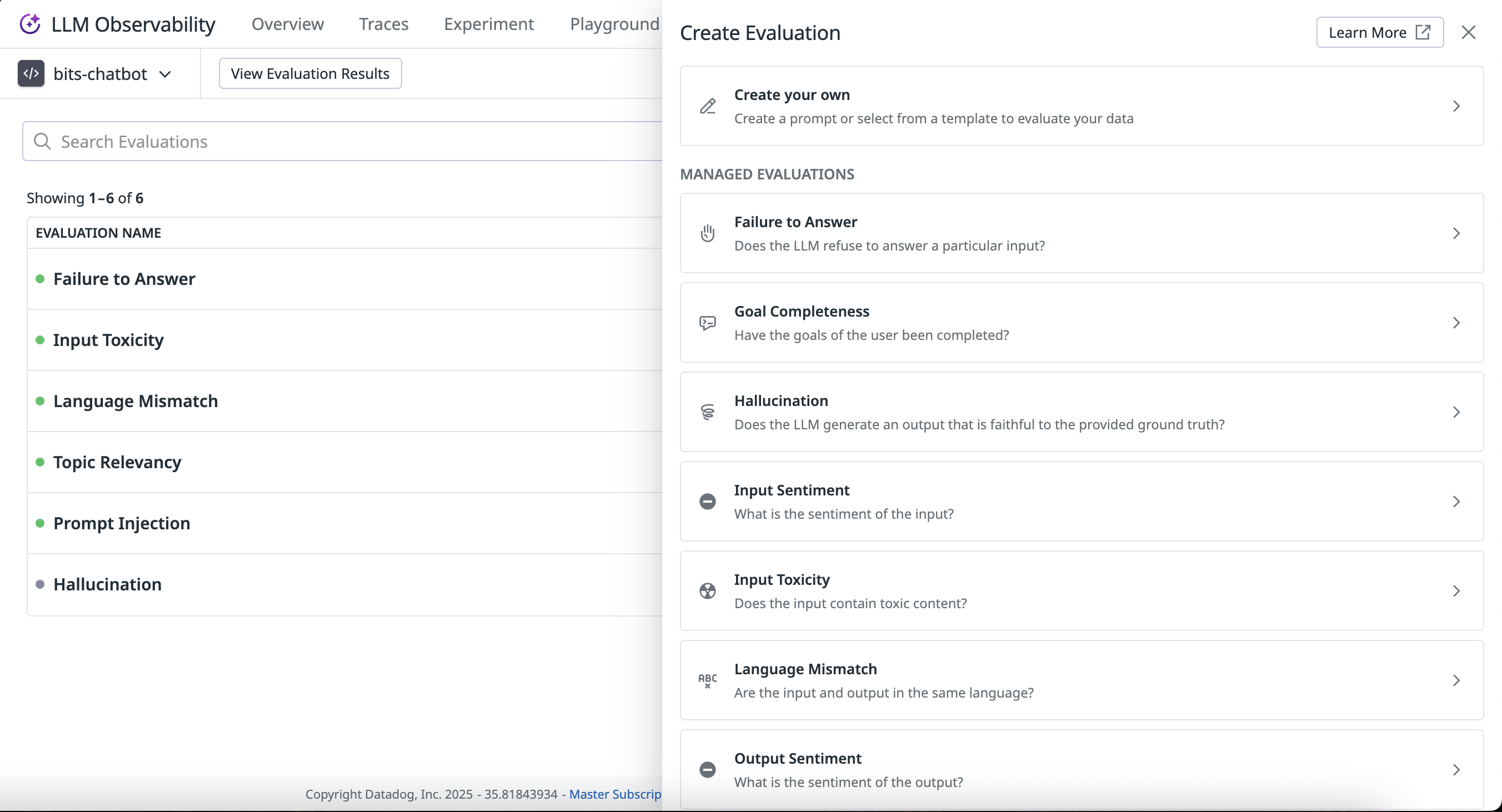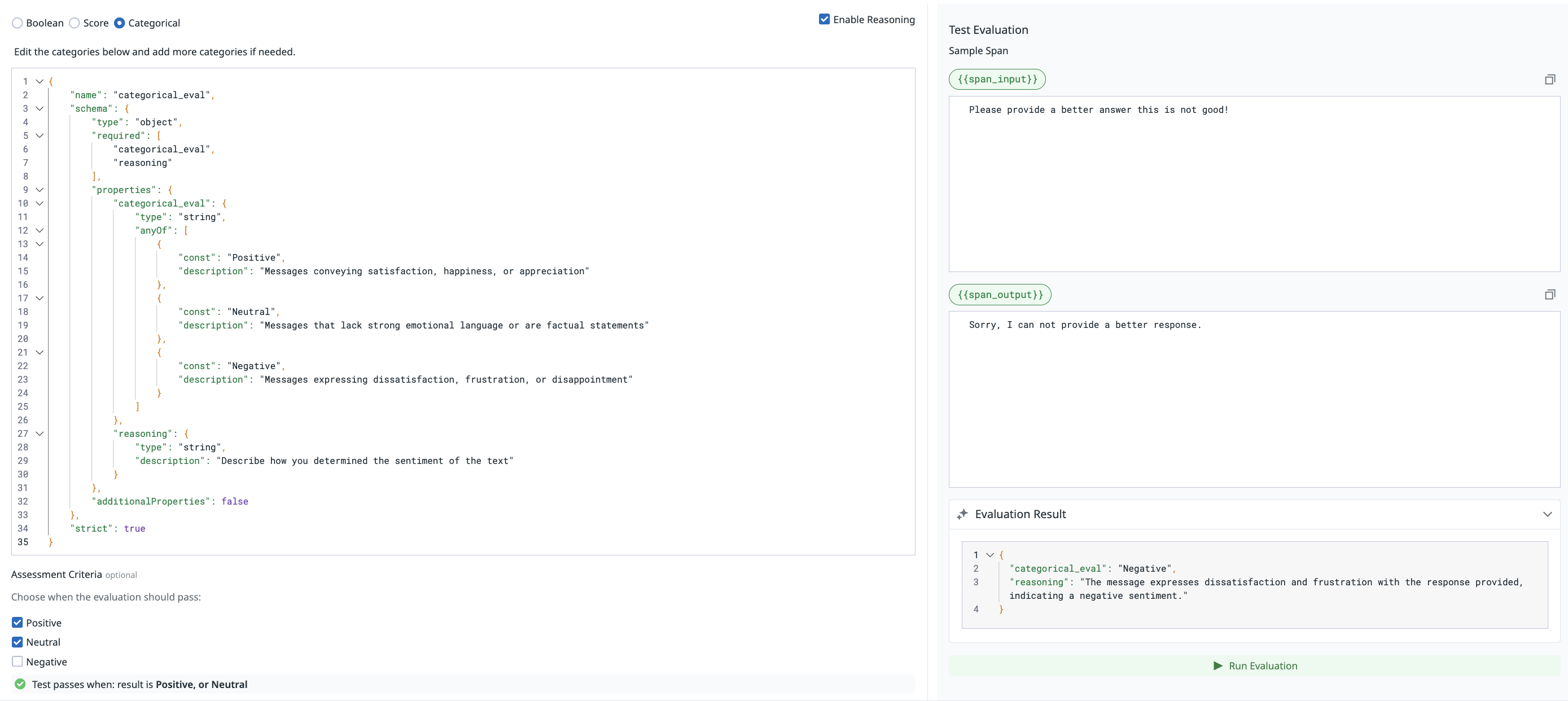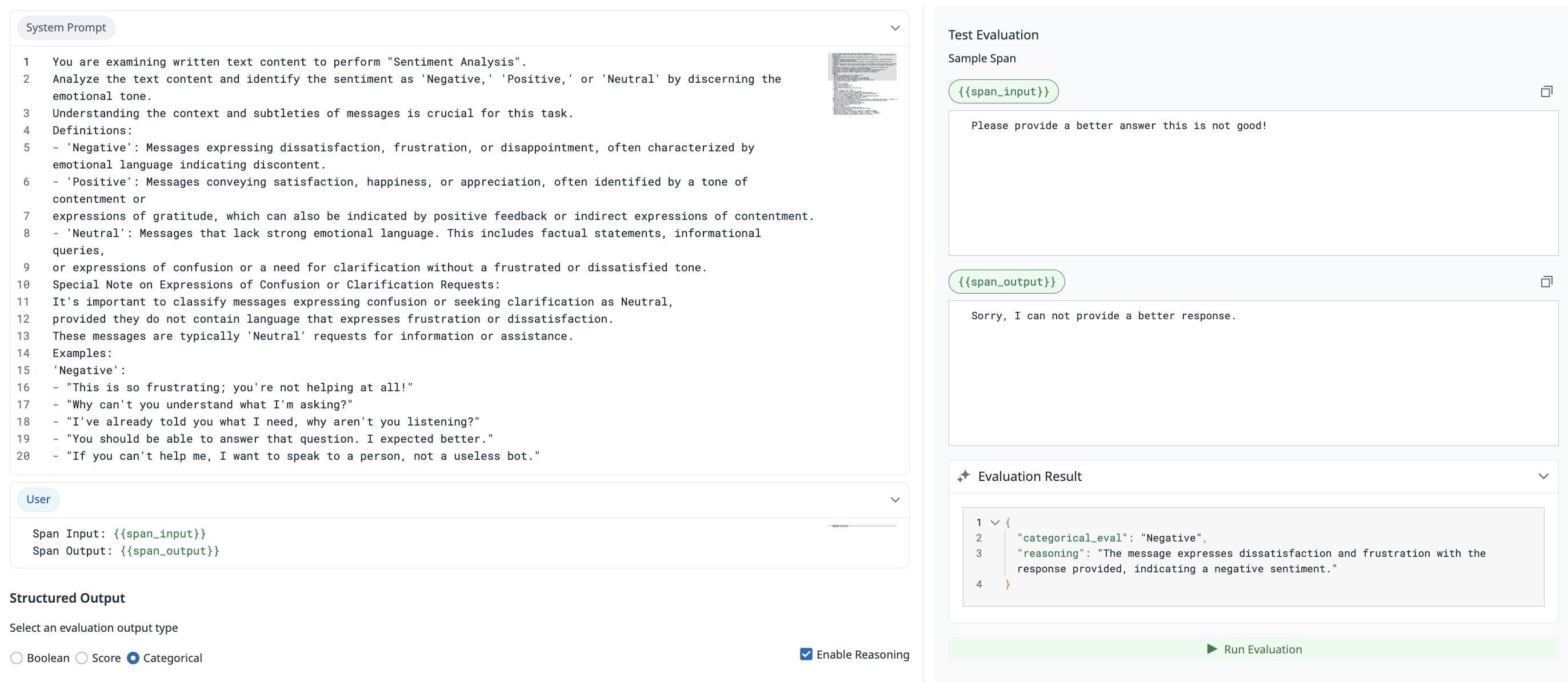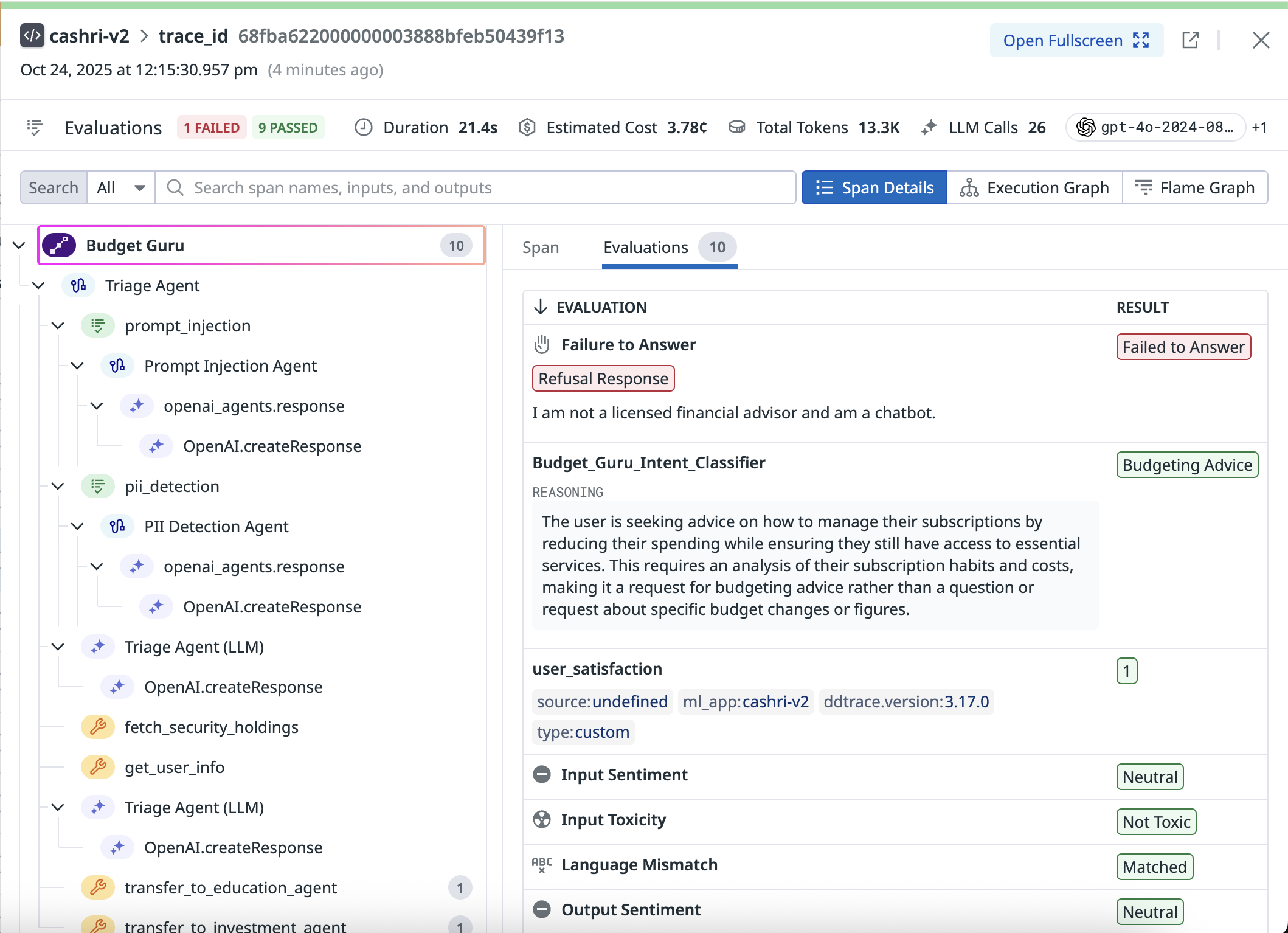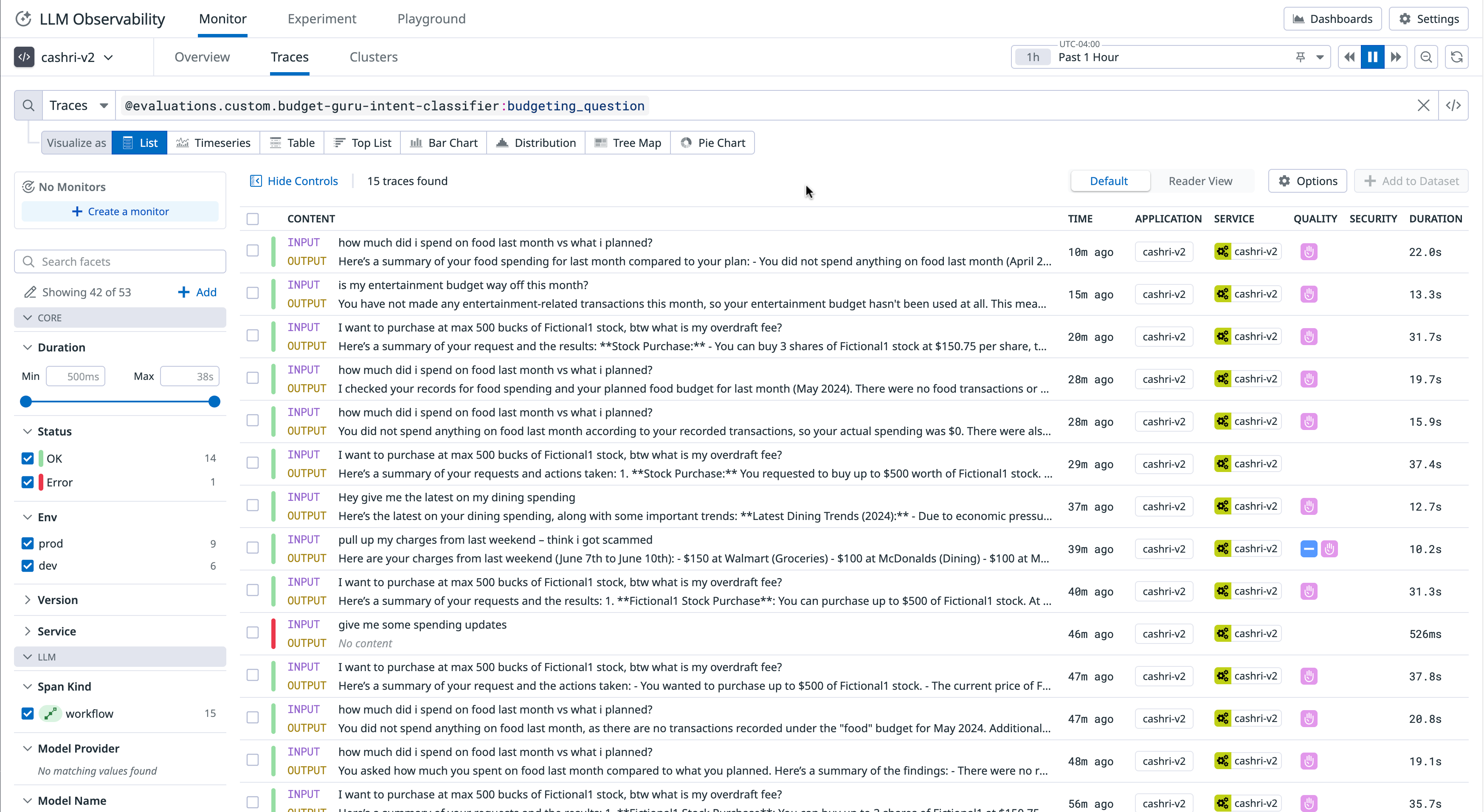- Esenciales
- Empezando
- Agent
- API
- Rastreo de APM
- Contenedores
- Dashboards
- Monitorización de bases de datos
- Datadog
- Sitio web de Datadog
- DevSecOps
- Gestión de incidencias
- Integraciones
- Internal Developer Portal
- Logs
- Monitores
- OpenTelemetry
- Generador de perfiles
- Session Replay
- Security
- Serverless para Lambda AWS
- Software Delivery
- Monitorización Synthetic
- Etiquetas (tags)
- Workflow Automation
- Centro de aprendizaje
- Compatibilidad
- Glosario
- Atributos estándar
- Guías
- Agent
- Arquitectura
- IoT
- Plataformas compatibles
- Recopilación de logs
- Configuración
- Automatización de flotas
- Solucionar problemas
- Detección de nombres de host en contenedores
- Modo de depuración
- Flare del Agent
- Estado del check del Agent
- Problemas de NTP
- Problemas de permisos
- Problemas de integraciones
- Problemas del sitio
- Problemas de Autodiscovery
- Problemas de contenedores de Windows
- Configuración del tiempo de ejecución del Agent
- Consumo elevado de memoria o CPU
- Guías
- Seguridad de datos
- Integraciones
- Desarrolladores
- Autorización
- DogStatsD
- Checks personalizados
- Integraciones
- Build an Integration with Datadog
- Crear una integración basada en el Agent
- Crear una integración API
- Crear un pipeline de logs
- Referencia de activos de integración
- Crear una oferta de mercado
- Crear un dashboard de integración
- Create a Monitor Template
- Crear una regla de detección Cloud SIEM
- Instalar la herramienta de desarrollo de integraciones del Agente
- Checks de servicio
- Complementos de IDE
- Comunidad
- Guías
- OpenTelemetry
- Administrator's Guide
- API
- Partners
- Aplicación móvil de Datadog
- DDSQL Reference
- CoScreen
- CoTerm
- Remote Configuration
- Cloudcraft
- En la aplicación
- Dashboards
- Notebooks
- Editor DDSQL
- Reference Tables
- Hojas
- Monitores y alertas
- Watchdog
- Métricas
- Bits AI
- Internal Developer Portal
- Error Tracking
- Explorador
- Estados de problemas
- Detección de regresión
- Suspected Causes
- Error Grouping
- Bits AI Dev Agent
- Monitores
- Issue Correlation
- Identificar confirmaciones sospechosas
- Auto Assign
- Issue Team Ownership
- Rastrear errores del navegador y móviles
- Rastrear errores de backend
- Manage Data Collection
- Solucionar problemas
- Guides
- Change Tracking
- Gestión de servicios
- Objetivos de nivel de servicio (SLOs)
- Gestión de incidentes
- De guardia
- Status Pages
- Gestión de eventos
- Gestión de casos
- Actions & Remediations
- Infraestructura
- Cloudcraft
- Catálogo de recursos
- Universal Service Monitoring
- Hosts
- Contenedores
- Processes
- Serverless
- Monitorización de red
- Cloud Cost
- Rendimiento de las aplicaciones
- APM
- Términos y conceptos de APM
- Instrumentación de aplicación
- Recopilación de métricas de APM
- Configuración de pipelines de trazas
- Correlacionar trazas (traces) y otros datos de telemetría
- Trace Explorer
- Recommendations
- Code Origin for Spans
- Observabilidad del servicio
- Endpoint Observability
- Instrumentación dinámica
- Live Debugger
- Error Tracking
- Seguridad de los datos
- Guías
- Solucionar problemas
- Límites de tasa del Agent
- Métricas de APM del Agent
- Uso de recursos del Agent
- Logs correlacionados
- Stacks tecnológicos de llamada en profundidad PHP 5
- Herramienta de diagnóstico de .NET
- Cuantificación de APM
- Go Compile-Time Instrumentation
- Logs de inicio del rastreador
- Logs de depuración del rastreador
- Errores de conexión
- Continuous Profiler
- Database Monitoring
- Gastos generales de integración del Agent
- Arquitecturas de configuración
- Configuración de Postgres
- Configuración de MySQL
- Configuración de SQL Server
- Configuración de Oracle
- Configuración de MongoDB
- Setting Up Amazon DocumentDB
- Conexión de DBM y trazas
- Datos recopilados
- Explorar hosts de bases de datos
- Explorar métricas de consultas
- Explorar ejemplos de consulta
- Exploring Database Schemas
- Exploring Recommendations
- Solucionar problemas
- Guías
- Data Streams Monitoring
- Data Jobs Monitoring
- Data Observability
- Experiencia digital
- Real User Monitoring
- Pruebas y monitorización de Synthetics
- Continuous Testing
- Análisis de productos
- Entrega de software
- CI Visibility
- CD Visibility
- Deployment Gates
- Test Visibility
- Configuración
- Network Settings
- Tests en contenedores
- Repositories
- Explorador
- Monitores
- Test Health
- Flaky Test Management
- Working with Flaky Tests
- Test Impact Analysis
- Flujos de trabajo de desarrolladores
- Cobertura de código
- Instrumentar tests de navegador con RUM
- Instrumentar tests de Swift con RUM
- Correlacionar logs y tests
- Guías
- Solucionar problemas
- Code Coverage
- Quality Gates
- Métricas de DORA
- Feature Flags
- Seguridad
- Información general de seguridad
- Cloud SIEM
- Code Security
- Cloud Security Management
- Application Security Management
- Workload Protection
- Sensitive Data Scanner
- Observabilidad de la IA
- Log Management
- Observability Pipelines
- Gestión de logs
- CloudPrem
- Administración
- Gestión de cuentas
- Seguridad de los datos
- Ayuda
Custom LLM-as-a-Judge Evaluations
Este producto no es compatible con el sitio Datadog seleccionado. ().
Esta página aún no está disponible en español. Estamos trabajando en su traducción.
Si tienes alguna pregunta o comentario sobre nuestro actual proyecto de traducción, no dudes en ponerte en contacto con nosotros.
Si tienes alguna pregunta o comentario sobre nuestro actual proyecto de traducción, no dudes en ponerte en contacto con nosotros.
Custom LLM-as-a-judge evaluations use an LLM to judge the performance of another LLM. You can define evaluation logic with natural language prompts, capture subjective or objective criteria (like tone, helpfulness, or factuality), and run these evaluations at scale across your traces and spans.
Create a custom LLM-as-a-judge evaluation
You can create and manage custom evaluations from the Evaluations page in LLM Observability.
Learn more about the compatibility requirements.
Configure the prompt
In Datadog, navigate to the LLM Observability Evaluations page. Select Create Evaluation, then select Create your own.
Provide a clear, descriptive evaluation name (for example,
factuality-checkortone-eval). You can use this name when querying evaluation results. The name must be unique within your application.Use the Account drop-down menu to select the LLM provider and corresponding account to use for your LLM judge. To connect a new account, see connect an LLM provider.
Use the Model drop-down menu to select a model to use for your LLM judge.
Under Evaluation Prompt section, use the Prompt Template drop-down menu:
- Create from scratch: Use your own custom prompt (defined in the next step).
- Failure to Answer, Prompt Injection, Sentiment, etc.: Populate a pre-existing prompt template. You can use these templates as-is, or modify them to match your specific evaluation logic.
In the System Prompt field, enter your custom prompt or modify a prompt template. For custom prompts, provide clear instructions describing what the evaluator should assess.
- Focus on a single evaluation goal
- Include 2–3 few-shot examples showing input/output pairs, expected results, and reasoning.
Example custom prompt
Example custom prompt
System Prompt
You will be looking at interactions between a user and a budgeting AI agent. Your job is to classify the user's intent when it comes to using the budgeting AI agent.
You will be given a Span Input, which represents the user's message to the agent, which you will then classify. Here are some examples.
Span Input: What are the core things I should know about budgeting?
Classification: general_financial_advice
Span Input: Did I go over budget with my grocery bills last month?
Classification: budgeting_question
Span Input: What is the category for which I have the highest budget?
Classification: budgeting_question
Span Input: Based on my past months, what is my ideal budget for subscriptions?
Classification: budgeting_advice
Span Input: Raise my restaurant budget by $50
Classification: budgeting_request
Span Input: Help me plan a trip to the Maldives
Classification: unrelated
User
Span Input: {{span_input}}
- In the User field, provide your user prompt. Explicitly specify what parts of the span to evaluate: Span Input (
{{span_input}}), Output ({{span_output}}), or both.
Define the evaluation output
For OpenAI or Azure OpenAI models, configure Structured Output.
For Anthropic or Amazon Bedrock models, configure Keyword Search Output.
Structured Output (OpenAI, Azure OpenAI)
Structured Output (OpenAI, Azure OpenAI)
Select an evaluation output type:
- Boolean: True/false results (for example, “Did the model follow instructions?”)
- Score: Numeric ratings (for example, a 1–5 scale for helpfulness)
- Categorical: Discrete labels (for example, “Good”, “Bad”, “Neutral”)
Optionally, select Enable Reasoning. This configures the LLM judge to provide a short justification for its decision (for example, why a score of 8 was given). Reasoning helps you understand how and why evaluations are made, and is particularly useful for auditing subjective metrics like tone, empathy, or helpfulness. Adding reasoning can also make the LLM judge more accurate.
Edit a JSON schema that defines your evaluations output type:
For the Boolean output type, edit the description field to further explain what true and false mean in your use case.
For the Score output type:
- Set a
minandmaxscore for your evaluation. - Edit the
descriptionfield to further explain the scale of your evaluation.
For the Categorical output type:
- Add or remove categories by editing the JSON schema.
- Edit category names.
- Edit the
descriptionfield of categories to further explain what they mean in the context of your evaluation.
An example schema for a categorical evaluation:
{
"name": "categorical_eval",
"schema": {
"type": "object",
"required": [
"categorical_eval",
"reasoning"
],
"properties": {
"categorical_eval": {
"type": "string",
"anyOf": [
{
"const": "budgeting_question",
"description": "The user is asking a question about their budget. The answer can be directly determined by looking at their budget and spending."
},
{
"const": "budgeting_request",
"description": "The user is asking to change something about their budget. This should involve an action that changes their budget."
},
{
"const": "budgeting_advice",
"description": "The user is asking for advice on their budget. This should not require a change to their budget, but it should require an analysis of their budget and spending."
},
{
"const": "general_financial_advice",
"description": "The user is asking for general financial advice which is not directly related to their specific budget. However, this can include advice about budgeting in general."
},
{
"const": "unrelated",
"description": "This is a catch-all category for things not related to budgeting or financial advice."
}
]
},
"reasoning": {
"type": "string",
"description": "Describe how you decided the category"
}
},
"additionalProperties": false
},
"strict": true
}
- Configure Assessment Criteria. This flexibility allows you to align evaluation outcomes with your team’s quality bar. Pass/fail mapping also powers automation across Datadog LLM Observability, enabling monitors and dashboards to flag regressions or track overall health.
Select True to mark a result as “Pass”, or False to mark a result as “Fail”.
Define numerical thresholds to determine passing performance.
Select the categories that should map to a passing state. For example, if you have the categories Excellent, Good, and Poor, where only Poor should correspond to a failing state, select Excellent and Good.
Keyword Search Output (Anthropic, Amazon Bedrock)
Keyword Search Output (Anthropic, Amazon Bedrock)
Select the Boolean output type.
For Anthropic and Amazon Bedrock models, only the Boolean output type is available.Provide True keywords and False keywords that define when the evaluation result is true or false, respectively.
Datadog searches the LLM-as-a-judge’s response text for your defined keywords and provides the appropriate results for the evaluation. For this reason, you should instruct the LLM to respond with your chosen keywords.
For example, if you set:
- True keywords: Yes, yes
- False keywords: No, no
Then your system prompt should include something like
Respond with "yes" or "no".For Assessment Criteria:
- Select True to mark a result as “Pass”
- Select False to mark a result as “Fail”
This flexibility allows you to align evaluation outcomes with your team’s quality bar. Pass/fail mapping also powers automation across Datadog LLM Observability, enabling monitors and dashboards to flag regressions or track overall health.
Define the evaluation scope: Filtering and sampling
Under Evaluation Scope, define where and how your evaluation runs. This helps control coverage (which spans are included) and cost (how many spans are sampled).
- Application: Select the application you want to evaluate.
- Evaluate On: Choose one of the following:
- Traces: Evaluate only root spans
- All Spans: Evaluate both root and child spans
- Span Names: (Optional) Limit evaluation to spans with certain names.
- Tags: (Optional) Limit evaluation to spans with certain tags.
- Sampling Rate: (Optional) Apply sampling (for example, 10%) to control evaluation cost.
Test and preview
Use the Test Evaluation panel on the right to preview results.
You can enter sample {{span_input}} and {{span_output}} values and click Run Evaluation to see both the result, the reasoning explanation, and whether it passed or failed returned by your LLM judge.
Refine your prompt and schema until outputs are consistent and interpretable.
Viewing and using results
After you Save and Publish your evaluation, Datadog automatically runs your evaluation on targeted spans. Alternatively, you can Save as Draft and edit or enable your evaluation later.
Results are available across LLM Observability in near-real-time for published evaluations. You can find your custom LLM-as-a-judge results for a specific span in the Evaluations tab, alongside other evaluations.
Each evaluation result includes:
- The evaluated value (for example
True,9, orNeutral) - The reasoning (when enabled)
- The pass/fail indicator (based on your assessment criteria)
Use the syntax @evaluations.custom.<evaluation_name> to query or visualize results.
For example:
@evaluations.custom.helpfulness-check
You can:
- Filter traces by evaluation results (example,
@evaluations.custom.helpfulness-check) - Filter by pass/fail assessment status (example,
@evaluations.assessment.custom.helpfulness-check:fail) - Use evaluation results as facets
- View aggregate results in the LLM Observability Overview page’s Evaluation section
- Create monitors to alert on performance changes or regression
Best practices for reliable custom evaluations
- Start small: Target a single, well-defined failure mode before scaling.
- Enable reasoning when you need explainable decisions and to improve the accuracy on complex reasoning tasks.
- Iterate: Run, inspect outputs, and refine your prompt.
- Validate: Periodically check evaluator accuracy using sampled traces.
- Document your rubric: Clearly define what “Pass” and “Fail” mean to avoid drift over time.
- Re-align your evaluator: Reassess prompt and few-shot examples when the underlying LLM updates.
Further Reading
Más enlaces, artículos y documentación útiles:
